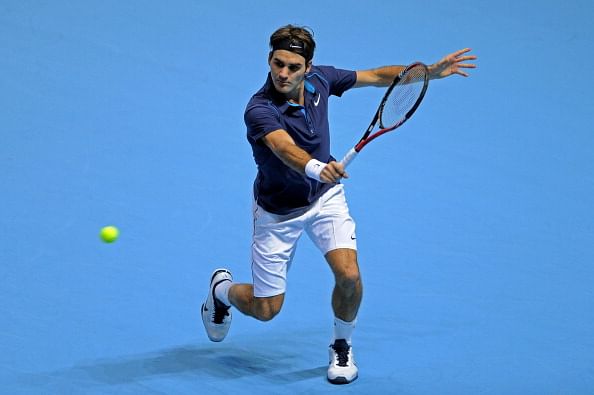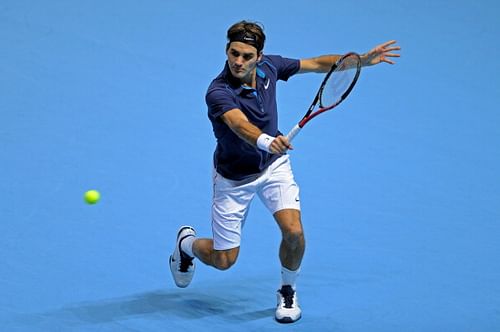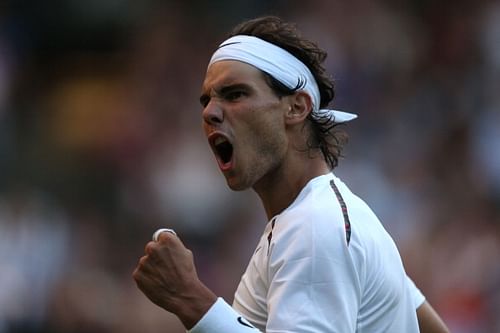
Tennis lessons and the debate on finesse vs power-play
One always wonders how a young child, who aspires to be a tennis player, must be feeling when he picks up a racket for the first time. The grip of the racket for almost every young child is bottom handed. It takes about two to three weeks, for beginners to get accustomed with the proper grip.
It’s quite taxing for the body to handle the fatigue caused by playing tennis in the initial few days. Your forearms pain like never before and your hands get numb but when there is a will to succeed, passion transcends and a path is paved for young upstarts.

The next task for these young learners is to consistently return the ball to the other side of the court but by only employing the forehand. The backhand is the most difficult shot to learn. Unless a kid has the natural ability to employ a one-handed backhand, like Pete Sampras or Roger Federer, the coaches generally teach the two-handed backhand.
The body now has to get used to the long rallies. Executing forehand after backhand and covering the court to keep the ball in play involves as much skill as resolve. The determination to keep hitting the ball to the other side of the court brings out the competitive side of the kid.
Learning to serve properly is the most important aspect of any tennis player’s game. The tossing of the ball, the jump at the right time, the impact of the racket on the ball at an angle; these things sound simpler than they actually are. There is no guaranteed time-frame in which one learns this art of serving. Some beginners actually avoid the jumping part after tossing the ball. The service then lacks the power. It might take years for one to get this part rectified. The keener a player is on improving his technique, the faster he learns to serve.
Assuming a player has learnt all the basics, he is asked to play matches mostly, say on the weekends. The realization embarks upon the player that there is a certain thing called ‘match temperament.’ The basic instinct is to win points. Now winning the important ones, when his back is against the wall, now that’s a totally different thing.
The most important thought arises in the minds of the players at that very moment. There are crossroads in his mind. Either a player would want to continue playing the long rallies and artistically finish off the rally, creating tough angles for the opponent by coming to the net and dictating terms or he would think of just smashing a ball hard and put his opponent under pressure to get the ball back. This raises the debate on “finesse versus power-play.”
What happens when finesse meets power-play? Look at Federer versus Nadal matches for instance. Federer relies on his artistry while Nadal looks to smash the leather right out of the tennis ball. The two styles of play are pleasing to watch but while Federer finds the angles on the court with a precision of a surgeon, Nadal challenges his opponent with his brute force. All of a sudden a game of tennis becomes a tussle of power; Nadal’s indomitable spirit flattens the opponent.

For a tennis aspirant the emphasis is laid on only making sure that the ball reaches the other end of the court. This is done for several months. This routine becomes so monotonous that a tennis aspirant can even hit a ball at the other end in his sleep. Now here’s when his natural ability comes into the play. Some aspirants do the run-of-the-mill stuff; others get adventurous and find innovative ways to hit a ball. The subconscious mind starts devising strategies. This just comes naturally, no amount of verbal discourses help a player reach that level.
There is no definitive answer to the question how a child chooses what he wants to become. It’s natural. I was watching young tennis players practising their serves in Mumbai. And I did not see a single kid practising the serve-and-volley style. So is this skill disappearing? Doesn’t it come naturally for the guys to attack the net more often?
These are some of the pressing issues lying before tennis fans. We are dying to see the next generation of tennis players win a Grand Slam and make us proud. From whatever practice I see of the tennis players, I can say that they are sweating it out, but they just need a good direction, or else they would just be lost in wilderness.